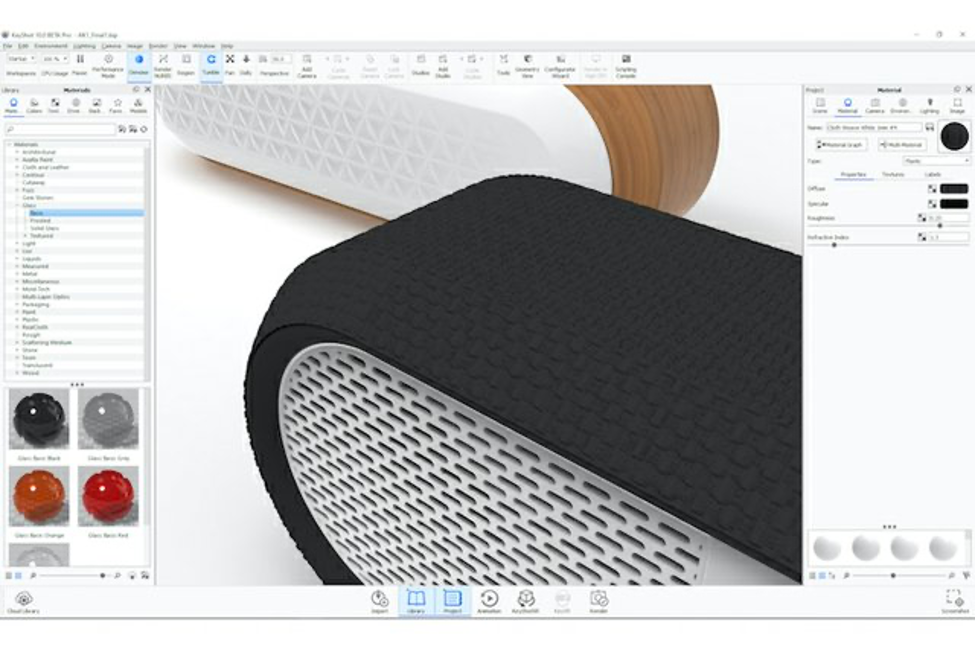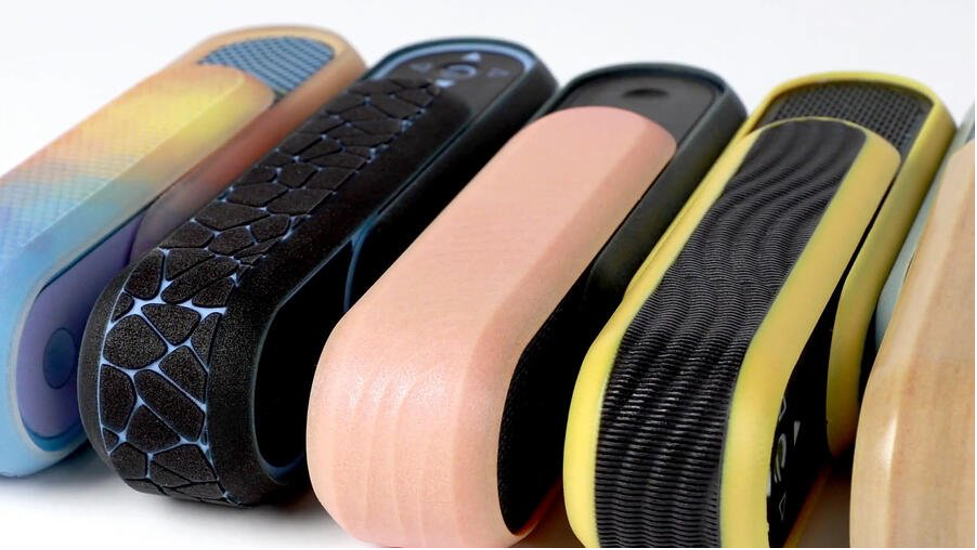Support for 3MF with GrabCAD in the middle; industrial designers turn out prototypes with multiple colors and textures in a day
In July 2020, Stratasys added the J55 compact to its line of J series multijet printers, which can now print multiple colors, textures, and materials, all in the same run. Stratasys has been actively building a pipeline for its printers through the 3MF consortium which will enable designers to create a prototype in less time with more realism.
Stratasys has been working with KeyShot to better enable designers to visualize their design as it will print. The two companies showcased their partnership with the latest release of KeyShot and showed off the J55 printer, which Stratasys describes as a printer designed to sit at the elbow of designers.

Stratasys and KeyShot have developed a workflow based on the 3MF format developed by an industry consortium founded by Microsoft, which includes CAD companies Autodesk, Dassault, Siemens, and PTC, printer companies 3D Systems, HP, Stratasys, Ultimaker, and materials supplier EOS. 3MF is widely supported.
For its recent releases of KeyShot, Luxion has been adding to the development of a “pre-manufacturing format” for 3MF with added tools to simulate CMF (color, material, finish) in KeyShot so that designers can play with these elements and output them to 3MF. Through that work, KeyShot 10 can produce files ready for printing, with accurate colors and bump/displacement maps to three-dimensionally simulate textures like fabric and wood, simply by outputting to the 3MF format. And says KeyShot, more enhancements are coming in 2021.
In 2019, KeyShot and Stratasys added support for Pantone colors, a common color format long used in commercial 2D printing. On the content creation side, Pantone has been supported by software tools for imaging and vector graphics including Adobe Photoshop and Illustrator.
To demonstrate the new capabilities that are now possible for printers through the 3MF format, Stratasys has sent printed samples to demonstrate the capabilities of the new printers. They worked with PriorityDesigns, a research and industrial design company based in Columbus, Ohio. Their designers have access to Stratasys printers to present their customers with 3D prototypes within a very short turnaround window, which the company describes as a secret weapon against competitors.
PriorityDesigns worked on a new design for a Bluetooth speaker—a good challenge since the world has plenty of Bluetooth speakers. What they came up with is a design that fits into the hand and could have different covers. Eric Fickas, an industrial designer at PriorityDesigns, said, “We developed this Bluetooth speaker model and used KeyShot to add all the textures like the speaker grill, then just saved to the new 3MF file format for 3D printing.” He added that they were able to produce five different models with five different wood samples and different fabrics.

In the KeyShot-to-Stratasys workflow, Stratasys’ GrabCAD sits in the middle as an intermediate step to check and optimize the model, allow multiple models to be arranged on the print tray and it also has support for fixing STL models and for monitoring printing and materials.
Stratasys says the 3MF support included in KeyShot and also the CMF features supported by KeyShot reduces 3D print modeling time to a single day.
Meanwhile, the designers at PriorityDesigns are enchanted by the accessibility of the J55 in the office. Emily Stokes, an industrial designer at PD describes a workflow that includes studies using Photoshop and modeling in SolidWorks but it can take “hours and days” to do textures in SolidWorks and they can simulate different effects in KeyShot instantly. This new workflow, say the people at PriorityDesigns, adds up to a huge difference in the time they can offer customers a 3D printed prototype.
Luxion Vice President of Product and Strategy, Derek Cicero says, “we were able to put automatic UV Unwrapping, baking and file packaging all in one step, allowing easy, fast, and intuitive 3D printing with next-generation full CMF printers such as the J55.”
What do we think?
Before, there was STL. There has been STL forever, and its value is in providing a format for 3D objects as unstructured, triangulated objects. It is suitable for exchange, and straightforward enough for machines but it hasn’t kept up with the evolution of printers. It knows nothing of scale, color, or materials. The 3D printer companies have long complained that they can do much more than a stripped-down format like STL can accommodate. Also, they need more. 3MF was introduced in 2015 by a powerful consortium but the world didn’t change then and there. It has taken 5 years to build an ecosystem of support from 3D programs and printers. There are a lot of moving parts, but the KeyShot-to-Stratasys workflow is an example of how all those moving parts can work together.





